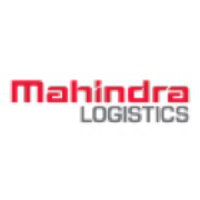
Mahindra Logistics Ltd
NSE:MAHLOG


| US |

|
Johnson & Johnson
NYSE:JNJ
|
Pharmaceuticals
|
| US |

|
Berkshire Hathaway Inc
NYSE:BRK.A
|
Financial Services
|
| US |

|
Bank of America Corp
NYSE:BAC
|
Banking
|
| US |

|
Mastercard Inc
NYSE:MA
|
Technology
|
| US |

|
UnitedHealth Group Inc
NYSE:UNH
|
Health Care
|
| US |

|
Exxon Mobil Corp
NYSE:XOM
|
Energy
|
| US |

|
Pfizer Inc
NYSE:PFE
|
Pharmaceuticals
|
| US |

|
Palantir Technologies Inc
NYSE:PLTR
|
Technology
|
| US |

|
Nike Inc
NYSE:NKE
|
Textiles, Apparel & Luxury Goods
|
| US |

|
Visa Inc
NYSE:V
|
Technology
|
| CN |

|
Alibaba Group Holding Ltd
NYSE:BABA
|
Retail
|
| US |

|
3M Co
NYSE:MMM
|
Industrial Conglomerates
|
| US |

|
JPMorgan Chase & Co
NYSE:JPM
|
Banking
|
| US |

|
Coca-Cola Co
NYSE:KO
|
Beverages
|
| US |

|
Walmart Inc
NYSE:WMT
|
Retail
|
| US |

|
Verizon Communications Inc
NYSE:VZ
|
Telecommunication
|
Utilize notes to systematically review your investment decisions. By reflecting on past outcomes, you can discern effective strategies and identify those that underperformed. This continuous feedback loop enables you to adapt and refine your approach, optimizing for future success.
Each note serves as a learning point, offering insights into your decision-making processes. Over time, you'll accumulate a personalized database of knowledge, enhancing your ability to make informed decisions quickly and effectively.
With a comprehensive record of your investment history at your fingertips, you can compare current opportunities against past experiences. This not only bolsters your confidence but also ensures that each decision is grounded in a well-documented rationale.
Do you really want to delete this note?
This action cannot be undone.

| 52 Week Range |
371.1
545.2
|
| Price Target |
|
We'll email you a reminder when the closing price reaches INR.
Choose the stock you wish to monitor with a price alert.

|
Johnson & Johnson
NYSE:JNJ
|
US |

|
Berkshire Hathaway Inc
NYSE:BRK.A
|
US |

|
Bank of America Corp
NYSE:BAC
|
US |

|
Mastercard Inc
NYSE:MA
|
US |

|
UnitedHealth Group Inc
NYSE:UNH
|
US |

|
Exxon Mobil Corp
NYSE:XOM
|
US |

|
Pfizer Inc
NYSE:PFE
|
US |

|
Palantir Technologies Inc
NYSE:PLTR
|
US |

|
Nike Inc
NYSE:NKE
|
US |

|
Visa Inc
NYSE:V
|
US |

|
Alibaba Group Holding Ltd
NYSE:BABA
|
CN |

|
3M Co
NYSE:MMM
|
US |

|
JPMorgan Chase & Co
NYSE:JPM
|
US |

|
Coca-Cola Co
NYSE:KO
|
US |

|
Walmart Inc
NYSE:WMT
|
US |

|
Verizon Communications Inc
NYSE:VZ
|
US |
This alert will be permanently deleted.
 Mahindra Logistics Ltd
Mahindra Logistics Ltd
Mahindra Logistics Ltd
Investor Relations
Mahindra Logistics Ltd. engages in the development and implementation of customized, technology-enabled logistics solutions. The company is headquartered in Mumbai, Maharashtra and currently employs 3,471 full-time employees. The company went IPO on 2017-11-10. The firm offers a range of integrated logistics and mobility solutions. The Company’s segments include Supply Chain Management and Enterprise Mobility Services. The Supply Chain Management segment offers customized, end-to-end logistics solutions and services, including transportation and distribution, warehousing, in-factory logistics, and value-added services to its clients. The Enterprise Mobility Services segment provides technology-enabled people transportation solutions and services across India for domestic and multinational companies operating in the information technology (IT), information technology-enabled services (ITeS), business process outsourcing, financial services, consulting and manufacturing industries. Its services also include on-call services, green-fleet solutions, event transportation, and subscription services.

Mahindra Logistics Ltd. engages in the development and implementation of customized, technology-enabled logistics solutions. The company is headquartered in Mumbai, Maharashtra and currently employs 3,471 full-time employees. The company went IPO on 2017-11-10. The firm offers a range of integrated logistics and mobility solutions. The Company’s segments include Supply Chain Management and Enterprise Mobility Services. The Supply Chain Management segment offers customized, end-to-end logistics solutions and services, including transportation and distribution, warehousing, in-factory logistics, and value-added services to its clients. The Enterprise Mobility Services segment provides technology-enabled people transportation solutions and services across India for domestic and multinational companies operating in the information technology (IT), information technology-enabled services (ITeS), business process outsourcing, financial services, consulting and manufacturing industries. Its services also include on-call services, green-fleet solutions, event transportation, and subscription services.





























 You don't have any saved screeners yet
You don't have any saved screeners yet
